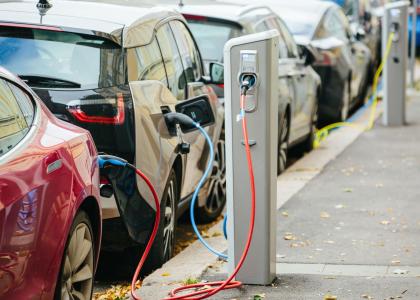Programs Should Engage and Serve Low- and Moderate-Income Households and Communities of Color
Washington, DC—As more utilities invest ratepayer funds to support and expand electric vehicle charging infrastructure, few states and power companies ensure equitable distribution of these funds, a new study finds. In fact, an analysis by the American Council for an Energy-Efficient Economy (ACEEE) shows that only six of 36 states evaluated have some form of equity mandate or consideration, such as requiring a certain share of funds be invested in low and moderate-income (LMI) communities and communities of color. It finds that utilities’ investments in underserved communities have been concentrated so far in only a handful of states.
Many electric vehicles already cost less to own than their gasoline counterparts, thanks to far lower fueling and maintenance costs, and prices are expected to drop further. But access to vehicle charging remains a key barrier, and companies that invest in charging infrastructure have focused on higher-income areas. As a result, low- and moderate-income communities could have less access to electric transportation options for years to come and be stuck paying higher costs. Insufficient charging could also leave them and communities of color continuing to face disproportionate air pollution from personal vehicles, trucks, and busses that are not electrified.
“As electric vehicles become more ubiquitous, we need a much more proactive effort to ensure that low-income communities and communities of color have access to charging and directly benefit,” said Peter Huether, ACEEE’s senior research analyst for transportation and author of the study. “State legislators and utility regulators need to set equity requirements, and utilities need to engage communities to create programs that serve everyone.”
The study, arriving as President Biden looks to enact an agenda that supports EVs, argues that policymakers and utilities must help fill these gaps to ensure equitable access. Increasingly, electric utilities are making plans to invest ratepayer funds in EV charging, including in “make-ready” upgrades to prepare sites for third parties to install charging equipment, incentives for homeowners or buildings owners to install chargers, and utility-owned charging sites and supporting equipment. For his part, Biden has pledged to invest in 500,000 EV charging stations and devote 40% of clean energy funding to disadvantaged communities.
The vast majority of charging investments from investor-owned utilities so far have been in two states that have equity mandates. California law requires that at least 35% of utilities’ funding for charging equipment go toward underserved communities; New York’s Public Service Commission ordered utilities to invest in charging with special considerations for LMI and environmental justice communities. ACEEE finds that at least $646 million of $2.4 billion in charging investments, which are primarily in these two states, has been earmarked for underserved communities (ACEEE reviewed programs from 78 major investor-owned utilities).
The study also finds that only 31 of 61 regulator-approved plans examined in the study listed a community engagement effort for these investments, which varied widely from posting a website to conducting a needs assessment. The study recommends how utilities preparing to begin such programs can engage communities to ensure the investments better meet the needs and priorities of community residents.
“Without strong policies in place, you could see a big round of ratepayer-funded charging investments going disproportionately to communities that least need the support,” said Huether. “All utilities considering vehicle charging programs should begin with robust community engagement to ensure their investments deliver on community needs.”
The study highlights three case studies on utility programs, including the community engagement efforts of Puget Sound Energy, which partnered with low-income assistance agencies to propose to regulators three pilot programs for EV charging. The utility engaged with nonprofits, government agencies, community service organizations, private mobility organizations, policy advocates, and nonprofit organizations before working to develop pilot project plans.
ACEEE’s study provides guidance for utilities and program administrators implementing vehicle charging programs, including calling on them to:
- Initiate community engagement early in the planning process to identify problems, set goals, receive feedback, and build trust with community members.
- Set aside funding for LMI and underserved communities, if not already doing so
- Use investments to increase clean mobility options in LMI communities as well as to provide the ability to charge medium- and heavy-duty vehicles operating in environmental justice communities.
ACEEE will draw on these recommendations for a working group it hosts to help utilities that are administering, developing, or considering EV charging programs achieve equitable outcomes.


